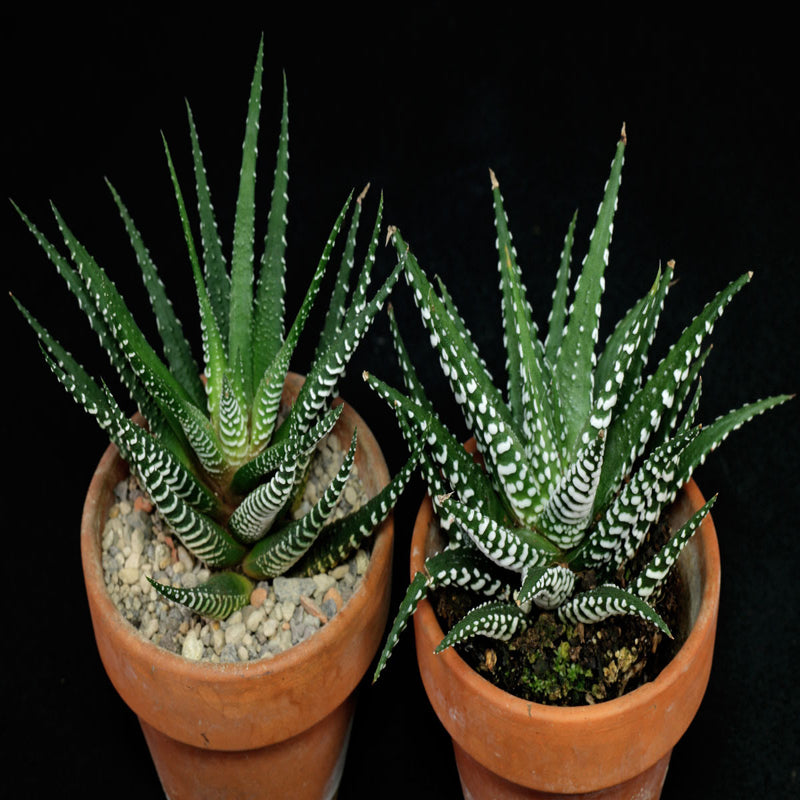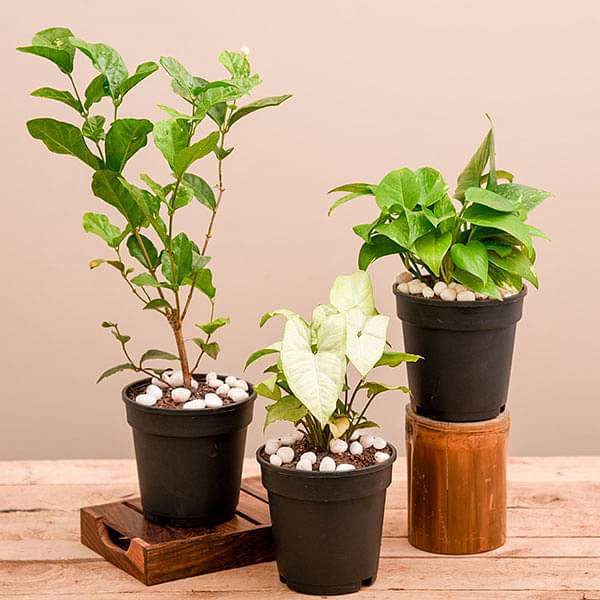Haworthia fasciata or also called as Zebra Plant are delicately small succulent houseplants, reaching up to 5 to 8-inches only in height. They have thick, dark green leaves with bumps of white tubercles on the outer surface, and are clustered together giving it a “Zebra” effect.
Furthermore, Zebra plants don’t need much effort when it comes to watering, as then can still survive even without one for many weeks. They also look exceptionally beautiful in unusual containers or interesting soil mixes, making them perfect for any indoor spaces!
Here are a few tips to keep your Haworthia Zebra thriving all year round!
1. LIGHTING

Unlike any other succulents, Zebra plants do well even in medium and low light conditions, which is usually found in an indoor setting. But if you want to bring out its stunning red and orange pigments, display them in a spot where they can get as much natural light as possible, like a south or east-facing windowsill.
If grown outdoors, find a location where your Zebra plant can enjoy at least 4 to 6 hours of bright light but no direct sunlight, especially in the afternoon. They have very sensitive leaves, and exposing them to direct light will most likely lead them to get dry tips, which is their way of telling you that they are receiving too much sunlight.


To provide them just the right amount they need, water your Zebra Plant generously until it comes out of the container’s drainage holes, throwing away any excess that was collected on the pot’s saucer, as they hate sitting in the wet for too long. Then, allow the soil to dry out completely before giving it another drink. You can use a moisture meter to check or by sticking your finger in the soil to the second knuckle. If it feels dry, then it is time to give your Zebra Plant a good drink. .
Additionally, wetting the Zebra Plant’s leaves may cause problems, such as rot. In case you accidentally drop any water on their foliage, gently wipe it off right away. Or better yet, use a squeeze bottle whenever you water this plant. We highly recommend this tool, especially for beginners, as this should help control where the water goes, which will minimize the risk of wetting the leaves.
In case your Zebra Plant is starting to develop discoloration and mushy leaves, hold off with your watering, as this is their way of letting you know that they are already getting too much water. It is best if you will take your Zebra out of the pot and clean off all the wet soil from the root to prevent it from getting worse. And make sure to let it air-dry for a few days before repotting your Haworthia.
We have Printable Succulent ID Cards as little gift for your continued support to Succulents Box. Click here to download that, it’ll be super helpful.
3. SOIL

Just like any other succulents, Zebra Plants grow best in a cactus potting mix that drains well. A mixture of equal part pumice or perlite, potting soil, and sand is also an ideal alternative. Also, since Zebra Plants have a long root system, it is advisable to plant them in a deep pot to give them extra space to provide airflow around the roots and give it more room to grow.
4. TEMPERATURE

The most favorable temperature in growing Zebra Plants ranges from 60 to 85 degrees Fahrenheit. Meaning, this plant can happily grow outdoors in zones 9 to 11.
But if you are located where the temperature gets colder than 30° Fahrenheit, it is recommended to grow this succulent in a pot where it can easily be brought indoors to ensure the plant’s health.
5. DORMANCY
In the hottest summer months, where the temperature hits above 80 degrees Fahrenheit, Haworthia Zebra will go through a dormancy period and is semi-dormant in early Winter. During these times, the plant’s growth will be very minimal and should be watered less than you usually do. Just enough to keep their soil moist.
However, indoor Haworthia Zebra will hardly go into dormancy. This is because the temperature is not as intense compared to outdoors. So it is important to monitor the surrounding temperature of this plant first before you cut back with your watering.
6. PROPAGATION

Propagating Zebra plants is pretty simple and can be done using offsets or stem cuttings. However, most prefer doing it through offset as it is easier compared to using stem cuttings.
To do this, simply pull a 2-inch tall offsets from the mother succulent, by gently twisting it and letting it dry out for about 1 to 1 days. Once your offsets have dried out, plant it in well-drained cactus soil, and give it some good watering.
Now, if you want to try doing it using stem cuttings, all you have to do is to get a healthy one with at least 4 to 6-inches in length. Allow your cuttings to dry out, then place it in a mix of perlite and moist peat. Make sure to cover your cuttings in plastic to retain moisture, and place it in a spot where the temperature is between 70 to 80 degrees Fahrenheit and under indirect sunlight. After about 3-4 weeks, your cuttings should already have grown new pups.







Reviews
There are no reviews yet.